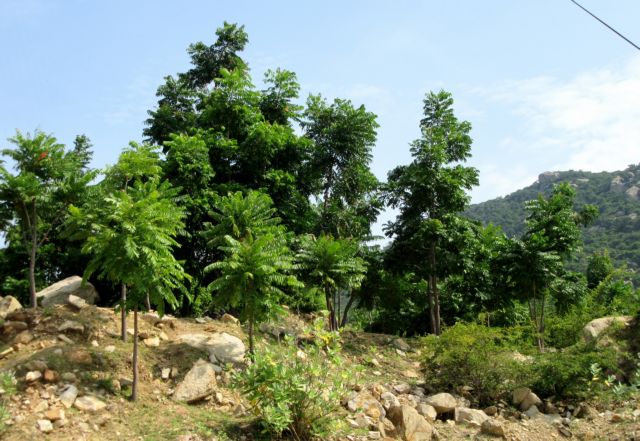 Environment
Environment

 |
| Ferntop ash, a type of indigenous tree which can cope with dry weather and drought, is planted in coastal protective forests in Ninh Thuận Province’s Thuận Nam District. – VNA/VNS Photo Nguyễn Thành |
NINH THUẬN – The south-central province of Ninh Thuận plans to grow 1,121ha of new forests to replace forest areas which are cut down in 2023-25.
The replacement forests include 500ha of special use forests and 621ha of protective forests which are managed by the management boards of special use forests and the management boards of protective forests.
The special use forests will grow three-needled pine trees and the protective forests will grow three-needled pine trees, ferntop ash and other indigenous trees.
The cost of planting these forests is VNĐ112 billion (US$4.7 million) and is funded by the Việt Nam Forest Protection and Development Fund.
The province grows forests in vacant lands and bare hills, protects existing forests and develops new forests, according to Lê Huyền, deputy chairman of the province People’s Committee.
It promotes the environmental protection of forests, secures water resources, copes with climate change proactively and effectively, prevents erosion and desertification, and protects natural resources and biodiversity, he said.
It also provides diversified forest environment services, creates jobs and incomes for local people, and aims to increase the forest coverage rate to 49 per cent in 2025.
To reach the targets, the province People’s Committee has asked its Department of Agriculture and Rural Development, Forest Protection Sub-department, forest owners and localities to check land funds and identify areas for growing replacement forests on vacant land and areas that cannot grow into forests naturally.
Of the 1,121ha of replacement forests, 400ha will be planted this year, 401ha next year and 320ha in 2025.
The province will mobilise human resources from forest protection forces and hire people from communities and households in areas which will plant the replacement forests between September and November every year.
During this period, Ninh Thuận, which is the country’s driest province, has more rain and this helps forest seedlings grow before the dry season comes.
The province has had policies to encourage organisations and individuals to invest in the forestry sector to protect and develop forests.
It aims to exploit the maximum value of forests through combining agriculture and forestry development, growing medicinal plants, and developing forest environment services.
It aims to effectively exploit forests to develop eco-tourism to create jobs and improve incomes for local people.
To improve the quality of forests, the province increases the use of advanced growing techniques and allocates forests for local people to protect.
Forest owners have increased the use of information technology to inspect, manage and monitor forests and biodiversity, and prevent and control forest fires.
The province has strengthened co-operation with international organisations to implement programmes and projects that transfer technologies to grow forests, research and preserve biodiversity, and develop the forestry economy.
It has more than 196,800ha of forests and forestry land for growing special-use forests, protective forests and commercial forests.
It planted nearly 1,000ha of new protective and special-use forests last year.
It has allocated more than 67,590ha of forests for households and organisations to protect and exploit, and this helps improve the quality of forests and recover many forests.
It has a forest cover of 47.1 per cent. – VNS




